- Region
- Águilas
- Alhama de Murcia
- Jumilla
- Lorca
- Los Alcázares
- Mazarrón
- San Javier
-
ALL AREAS & TOWNS
- AREAS
- SOUTH WEST
- MAR MENOR
- MURCIA CITY & CENTRAL
- NORTH & NORTH WEST
- TOWNS
- Abanilla
- Abarán
- Aguilas
- Alamillo
- Alcantarilla
- Aledo
- Alhama de Murcia
- Archena
- Balsicas
- Blanca
- Bolnuevo
- Bullas
- Cañadas del Romero
- Cabo de Palos
- Calasparra
- Camping Bolnuevo
- Campo De Ricote
- Camposol
- Canada De La Lena
- Caravaca de la Cruz
- Cartagena
- Cehegin
- Ceuti
- Cieza
- Condado de Alhama
- Corvera
- Costa Cálida
- Cuevas De Almanzora
- Cuevas de Reyllo
- El Carmoli
- El Mojon
- El Molino (Puerto Lumbreras)
- El Pareton / Cantareros
- El Raso
- El Valle Golf Resort
- Fortuna
- Fuente Alamo
- Hacienda del Alamo Golf Resort
- Hacienda Riquelme Golf Resort
- Isla Plana
- Islas Menores & Mar de Cristal
- Jumilla
- La Azohia
- La Charca
- La Manga Club
- La Manga del Mar Menor
- La Pinilla
- La Puebla
- La Torre
- La Torre Golf Resort
- La Unión
- Las Palas
- Las Ramblas
- Las Ramblas Golf
- Las Torres de Cotillas
- Leiva
- Librilla
- Lo Pagan
- Lo Santiago
- Lorca
- Lorquí
- Los Alcázares
- Los Balcones
- Los Belones
- Los Canovas
- Los Nietos
- Los Perez (Tallante)
- Los Urrutias
- Los Ventorrillos
- Mar De Cristal
- Mar Menor
- Mar Menor Golf Resort
- Mazarrón
- Mazarrón Country Club
- Molina de Segura
- Moratalla
- Mula
- Murcia City
- Murcia Property
- Pareton
- Peraleja Golf Resort
- Perin
- Pilar de la Horadada
- Pinar de Campoverde
- Pinoso
- Playa Honda
- Playa Honda / Playa Paraíso
- Pliego
- Portmán
- Pozo Estrecho
- Puerto de Mazarrón
- Puerto Lumbreras
- Puntas De Calnegre
- Region of Murcia
- Ricote
- Roda Golf Resort
- Roldan
- Roldan and Lo Ferro
- San Javier
- San Pedro del Pinatar
- Santiago de la Ribera
- Sierra Espuña
- Sucina
- Tallante
- Terrazas de la Torre Golf Resort
- Torre Pacheco
- Totana
- What's On Weekly Bulletin
- Yecla


- EDITIONS:
 Spanish News Today
Spanish News Today
 Alicante Today
Alicante Today
 Andalucia Today
Andalucia Today
Iglesia Arciprestal de Nuestra Señora del Carmen, Murcia
The church of El Carmen is a focal point for the public events in Murcia City
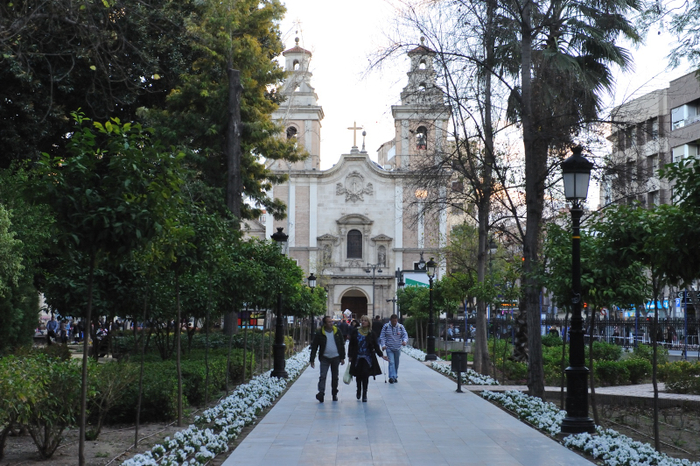
The Iglesia del Carmen, which lies at the heart of the Barrio del Carmen on the southern bank of the River Segura in the centre of Murcia, is an 18th century baroque construction which is one of the best known 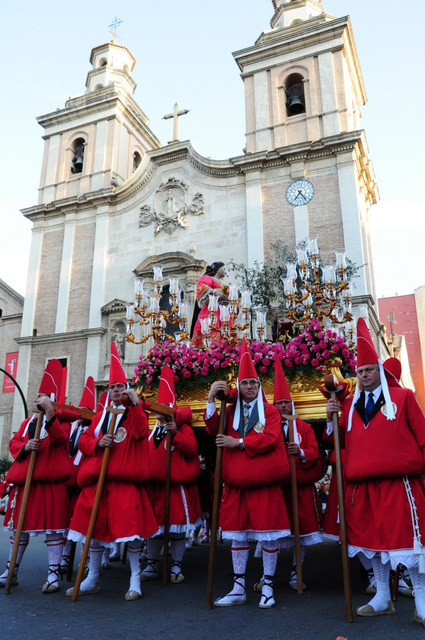 monuments in this part of the city and forms a striking backdrop for all of the main annual procession routes during the local fiestas taking place in the city.
monuments in this part of the city and forms a striking backdrop for all of the main annual procession routes during the local fiestas taking place in the city.
These include Semana Santa, the famous Wednesday night procession of the Coloraos leaving from this church, the Bando de la Huerta in the Fiestas de Primavera during the week after Easter, the Entierro de la Sardina at the end of the same week, the Three Kings on the eve of Epiphany and the Romerías of the Virgen de la Fuensanta, the patron of Murcia, who stops at the church on the way down from her mountain sanctuary on the edge of the El Valle y Carrascoy regional park. On her arrival the Virgen de la Fuensanta is greeted by 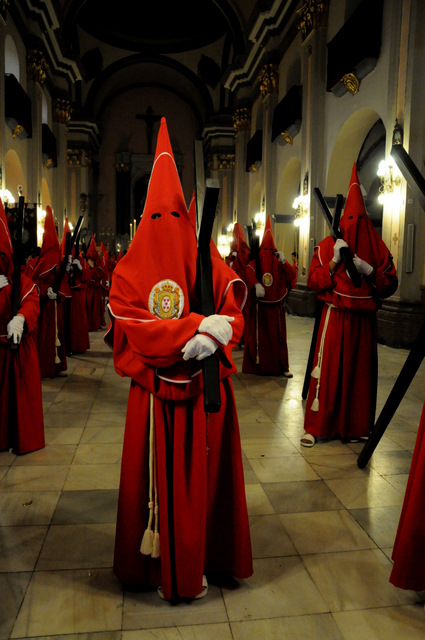 local dignitaries and showered with rose petals from the window above the Capilla de San José. “La Morenica” is then paraded into the church itself before going on either to the Cathedral or back to the sanctuary in Algezares.
local dignitaries and showered with rose petals from the window above the Capilla de San José. “La Morenica” is then paraded into the church itself before going on either to the Cathedral or back to the sanctuary in Algezares.
Located at the southern end of the Jardín de Floridablanca, which was the first public park and garden in Murcia, the building was a Carmelite monastery until the 19th century, and has for over 200 years been the most emblematic building on the southern side of the river. In the past its twin towers dominated the skyline of the surrounding neighbourhood, and over the last couple of centuries it has withstood various floods, unlike many other buildings in this area of Murcia.
The church itself forms part of a group of buildings which can be clearly seen while crossing the river over the Puente de los Peligros, which was completed in 1742 and was designed by Toribio Martínez de la Vega and Jaime Bort.
Brief history of the Iglesia del Carmen
Although the church was not completed until 1769 its history really starts far earlier, on 14th October 1651, 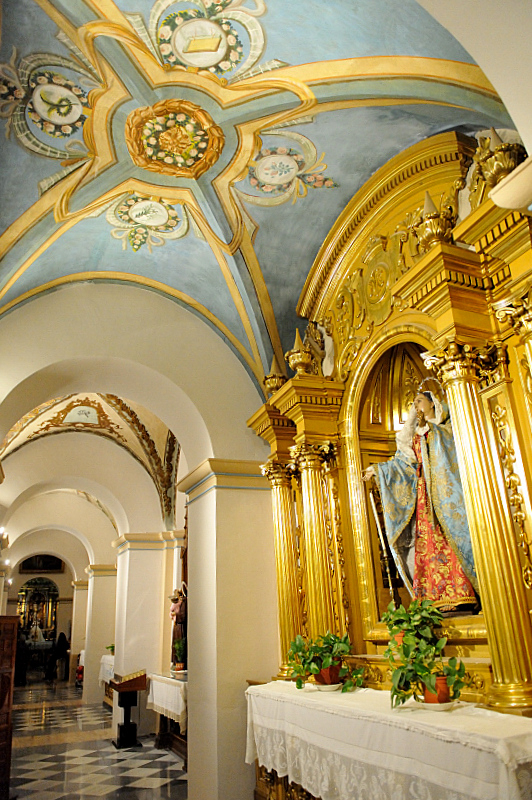 when the heavens opened and one of the most destructive floods ever to affect Murcia began. The countryside around the city became an “ocean” according to contemporary descriptions, and in the cathedral the water level rose to several metres above the ground. Houses and other buildings were simply washed away, cattle drowned, trees were uprooted and over a thousand people lost their lives as the floodwater decimated the city’s population.
when the heavens opened and one of the most destructive floods ever to affect Murcia began. The countryside around the city became an “ocean” according to contemporary descriptions, and in the cathedral the water level rose to several metres above the ground. Houses and other buildings were simply washed away, cattle drowned, trees were uprooted and over a thousand people lost their lives as the floodwater decimated the city’s population.
The rain started to fall at around three o’clock in the morning, and within three hours the rivers Segura, Lorca and Mula all combined to fill the ramblas of Nogalte and Sangonera to overflowing. By eight o’clock Murcia and the surrounding farmland were underwater.
One of the victims of this flood was the Carmelite monastery on the southern bank of the river opposite the city centre of Murcia, and over the following decades many initiatives were launched to build a new monastery 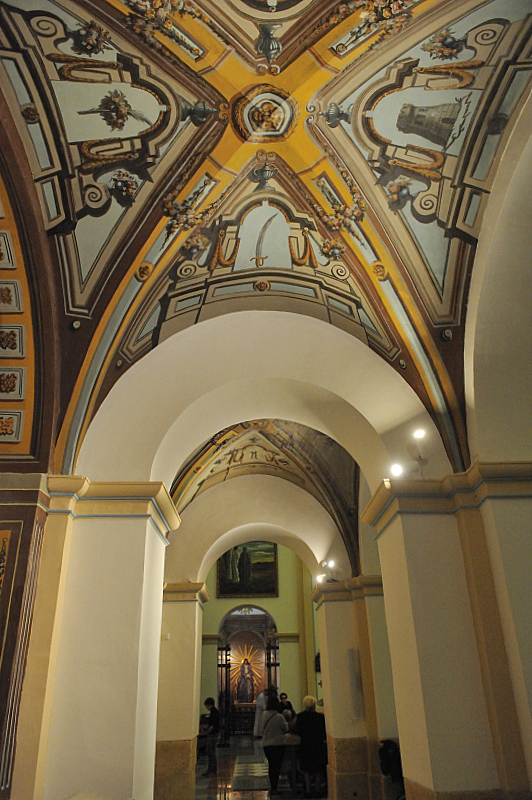 in its place. However, it was not until 1721 that the Diocese of Cartagena donated 4,000 reales to the cause and construction actually began. By June of that year the foundations had been laid and on 14th September the first stone was officially placed, but by the middle of the century work had ground to a halt due to a lack of funds.
in its place. However, it was not until 1721 that the Diocese of Cartagena donated 4,000 reales to the cause and construction actually began. By June of that year the foundations had been laid and on 14th September the first stone was officially placed, but by the middle of the century work had ground to a halt due to a lack of funds.
This situation was not remedied until the generous donation made by Felipe García Ros and his wife Catalina Faz Ros in 1767, and this enabled the new monastery to be completed, although the Carmelites were left owing money as a result.
During the Napoleonic Wars the building was twice called into service as a hospital, and in 1835 the monastery was closed by the liberal government until the monks were secularized.
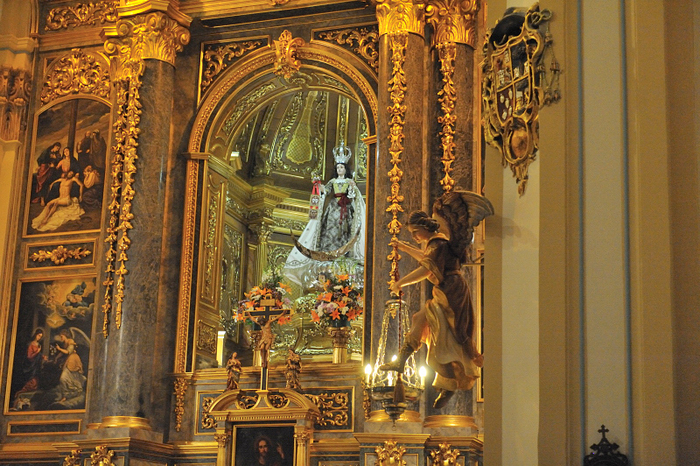 The convent church was designated a parish church as late as 1858, and quickly became the centre of the community on the south of the river. However, in the 20th century it suffered the same fate as many other religious buildings, and during the Civil War major damage was done to valuable works of art including various by Francisco Salzillo, Nicolás de Bussy, Pablo Sístori, Roque López and others as well as to the building itself. The church has since been restored and the artworks replaced with modern pieces, although some important artworks still remain, amongst them an “Inmaculada” by Francisco Salzillo
The convent church was designated a parish church as late as 1858, and quickly became the centre of the community on the south of the river. However, in the 20th century it suffered the same fate as many other religious buildings, and during the Civil War major damage was done to valuable works of art including various by Francisco Salzillo, Nicolás de Bussy, Pablo Sístori, Roque López and others as well as to the building itself. The church has since been restored and the artworks replaced with modern pieces, although some important artworks still remain, amongst them an “Inmaculada” by Francisco Salzillo
The Iglesia del Carmen today
The most recognizable features of the outside of the building are the two identical bell-towers, one on either 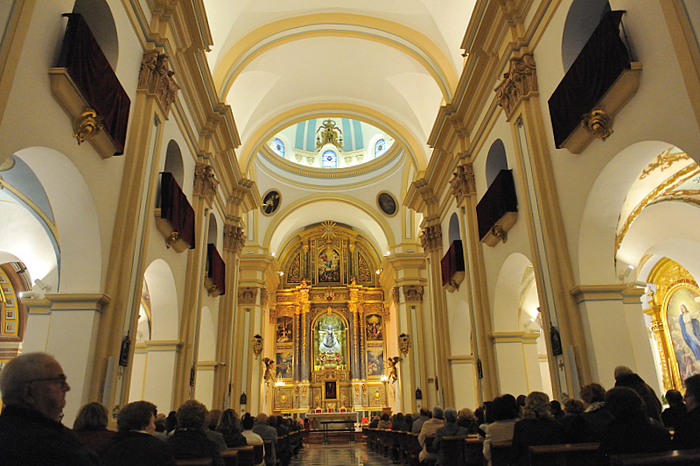 side of the baroque façade, and the main entrance through a triumphal arch above which two niches contain the figures of the saints who protect the temple (San Felipe and Santa Catalina, chosen after the two benefactors who allowed the building to be completed). Above these the Virgen del Carmen is portrayed in a relief sculpture.
side of the baroque façade, and the main entrance through a triumphal arch above which two niches contain the figures of the saints who protect the temple (San Felipe and Santa Catalina, chosen after the two benefactors who allowed the building to be completed). Above these the Virgen del Carmen is portrayed in a relief sculpture.
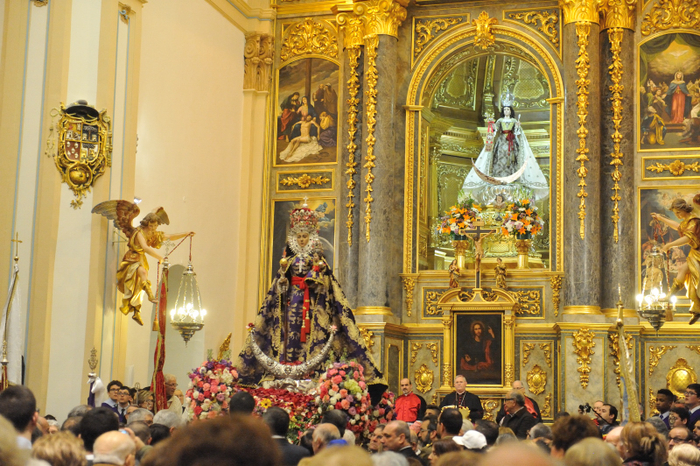 Inside, the typical cross-shaped layout of the church is based on a large main nave flanked by two smaller aisles, along which ten side chapels are distributed. The transept wings are of equal size, and access to the sacristy is through a door in one of them.
Inside, the typical cross-shaped layout of the church is based on a large main nave flanked by two smaller aisles, along which ten side chapels are distributed. The transept wings are of equal size, and access to the sacristy is through a door in one of them.
Two private chapels are located in these wings, both of them independent from the main altar. One of these 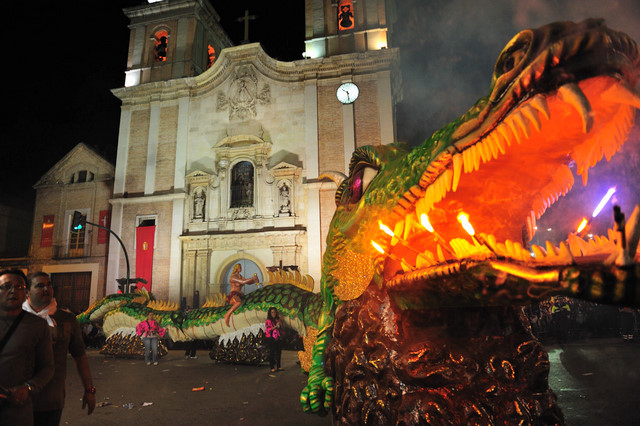 houses the church’s most important work of art, the Cristo de la Preciosísima Sangre by Nicolás de Bussy, which features in the “Coloraos” procession on Easter Wednesday, and the other is home to the Virgen del Carmen (or Virgen del Sagrario).
houses the church’s most important work of art, the Cristo de la Preciosísima Sangre by Nicolás de Bussy, which features in the “Coloraos” procession on Easter Wednesday, and the other is home to the Virgen del Carmen (or Virgen del Sagrario).
Other works of art include the “Inmaculada” by Francisco Salzillo.
Semana Santa
This church is the headquarters of the Coloraos, or to give them their official title, the Real, Muy Ilustre, 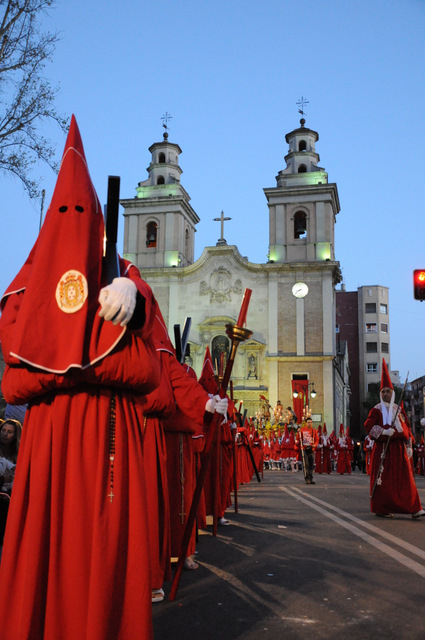 Venerable y Antiquísima Archicofradía de la Preciosísima Sangre de Nuestro Señor Jesucristo.
Venerable y Antiquísima Archicofradía de la Preciosísima Sangre de Nuestro Señor Jesucristo.
Their most famous procession is on Miercoles Santo, the Wednesday of Easter week, when around 4000 Coloraos stain the streets of Murcia red with the blood of Christ in the Wednesday evening procession.
Click for full information about the Wednesday night procession of the Coloraos
Procesión de la Real, Muy Ilustre, Venerable y Antiquísima Archicofradía de la Preciosísima Sangre de Nuestro Señor Jesucristo
10 pasos
1. Samaritana (1799)
2. Sculptor: Roque López
2. Jesús en casa de Lázaro (1985) Sculptor: José Hernández Navarro
3. Lavatorio (1952) Sculptor: Juan González Moreno
4. Negación
Sculptors:
- Cristo: Gregorio Molera (1948)
- San Pedro: Nicolás de Bussi (1699)
5. Pretorio
Sculptors:
- Cristo: Nicolás de Bussi (1699)
- Pilatos y Berrugo: José Sánchez Lozano (1945)
- Soldados: José Molera (1948)
6. Hijas de Jerusalén (1956) Sculptor: Juan González Moreno
7. Cristo de las Penas (1986) Sculptor: José Hernández Navarro
8. Cristo de la Sangre (1693) Sculptor: Nicolás de Bussi
9. San Juan (1905) Sculptor: Juan Dorado Brisa
10. Dolorosa (1787) Sculptor: Roque López
11. San Vicente Ferrer, (2011)Sculptor: Ramón Cuenca Soto
Cartagena
El Carmoli
Islas Menores and Mar de Cristal
La Manga Club
La Manga del Mar Menor
La Puebla
La Torre Golf Resort
La Union
Los Alcazares
Los Belones
Los Nietos
Los Urrutias
Mar Menor Golf Resort
Pilar de la Horadada
Playa Honda / Playa Paraiso
Portman
Roldan and Lo Ferro
San Javier
San Pedro del Pinatar
Santa Rosalia Lake and Life resort
Terrazas de la Torre Golf Resort
Torre Pacheco
Aledo
Alhama de Murcia
Bolnuevo
Camposol
Condado de Alhama
Fuente Alamo
Hacienda del Alamo Golf Resort
Lorca
Mazarron
Puerto de Mazarron
Puerto Lumbreras
Sierra Espuna
Totana
Abaran
Alcantarilla
Archena
Blanca
Corvera
El Valle Golf Resort
Hacienda Riquelme Golf Resort
Lorqui
Molina de Segura
Mosa Trajectum
Murcia City
Peraleja Golf Resort
Ricote
Sucina
Condado de Alhama
El Valle Golf Resort
Hacienda del Alamo Golf Resort
Hacienda Riquelme Golf Resort
Islas Menores and Mar de Cristal
La Manga Club
La Torre Golf Resort
Mar Menor Golf Resort
Mazarron Country Club
Mosa Trajectum
Peraleja Golf Resort
Santa Rosalia Lake and Life resort
Terrazas de la Torre Golf Resort
La Zenia
Lomas de Cabo Roig
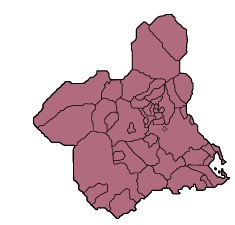
CAMPOSOL TODAY Whats OnCartagena SpainCoronavirusCorvera Airport MurciaMurcia Gota Fria 2019Murcia property news generic threadWeekly Bulletin
